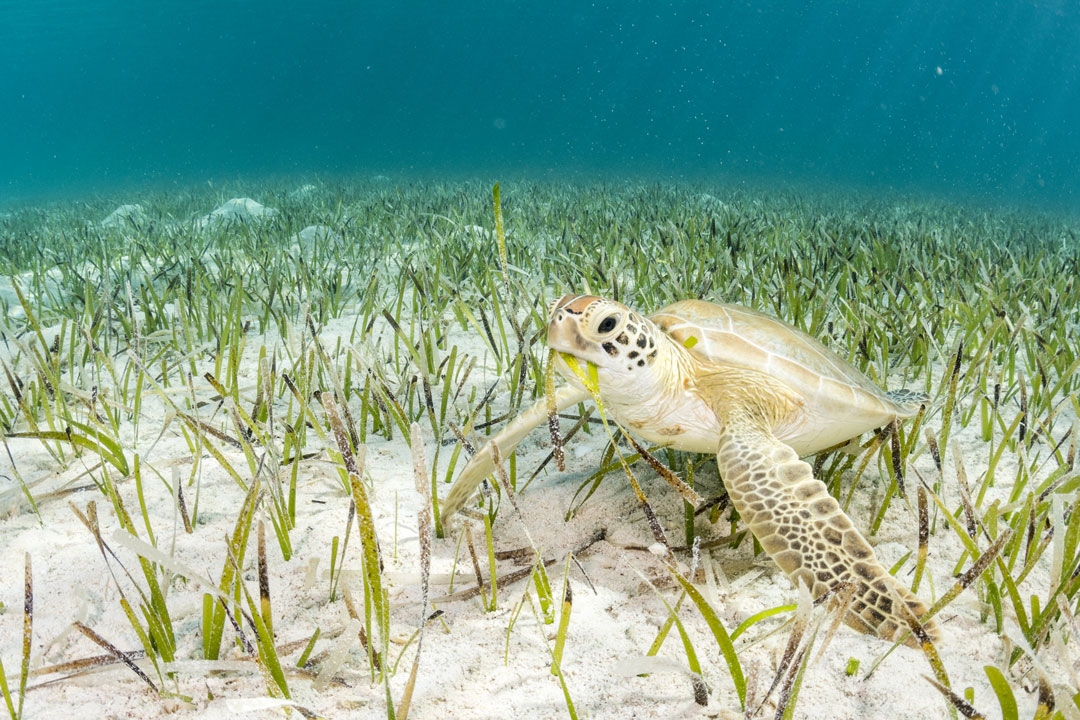What are turtles chomping in Bimini?
It’s what’s on the menu that matters when it comes to what turtles are picking to eat, and what’s on offer can be quite different depending where you’re dining in this ocean buffet! A new paper published in Marine Ecology Progress Series (MEPS) in July showed that the dietary choices of juvenile green turtles at two sites at Bimini, Bahamas differed.

Map of Bimini Islands, The Bahamas. Image © Google Maps | Google 2018
Lead author Anthony Gillis, together with Simona Ceriani, Jeffrey Seminoff and Mariana Fuentes, found that at Bonefish Hole, a mangrove tidal estuary on the north island of Bimini, turtles sought out green algae and were omnivorous. They also ate filter feeders sitting on the seafloor. Filter feeders are animals, like mussels, that actively pump seawater through their own filtration system to strain microscopic food like plankton from the water that filters through them.

Photo © blue-sea.cz | Shutterstock
On the other hand, turtles in South Bimini, which is an open coastal seagrass bed, were herbivorous and pretty picky in their dietary preferences. They ate seagrasses and in particular, red algae when it was available.
Understanding what turtles eat helps scientists understand a few important things. The food that animals eat determines their physiology, like how quickly (or slowly) they might grow, and when they will reach maturity. These are important factors: for instance, how quickly a turtle grows might affect how long they are vulnerable to predators in their early stages. How quickly they mature determines they might begin breeding, which in turn affects their reproductive productivity. This has implications for their entire population.

Photo © Shane Gross | Shutterstock
If we know what turtles eat, and that what they choose to eat may differ depending on where they live, we’re better equipped to protect the kind of habitats and species they need to complete their menu.
Read the full paper here.
Reference: Gillis AJ, Ceriani SA, Seminoff JA, Fuentes MMPB (2018) Foraging ecology and diet selection of juvenile green turtles in the Bahamas: insights from stable isotope analysis and prey mapping. Mar Ecol Prog Ser 599:225-238. https://doi.org/10.3354/meps12635
